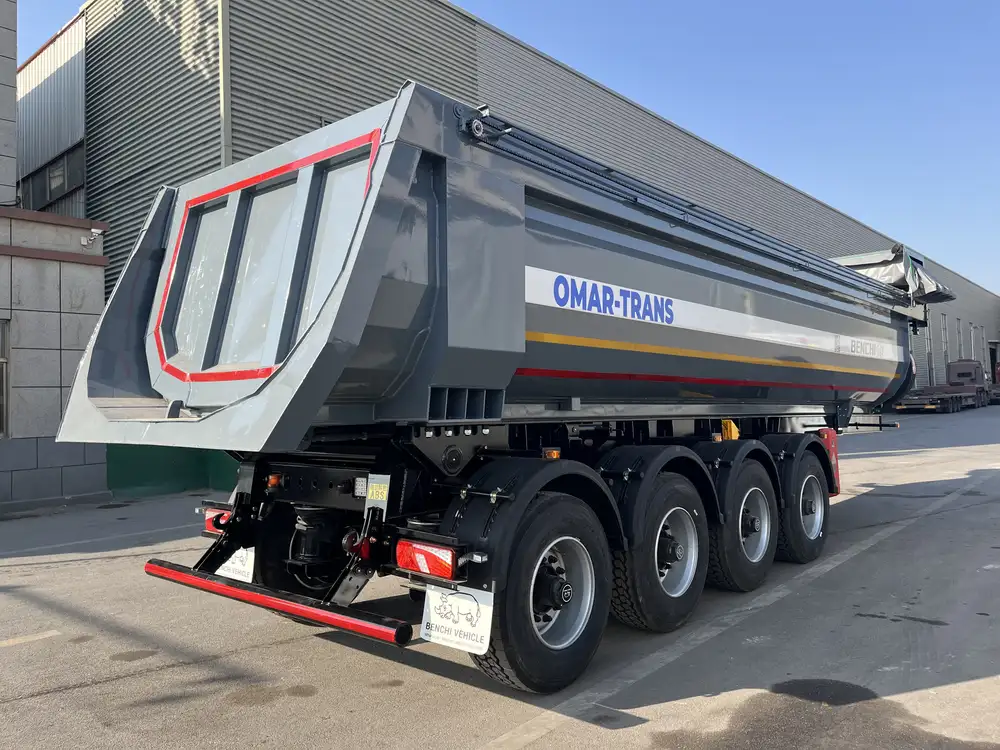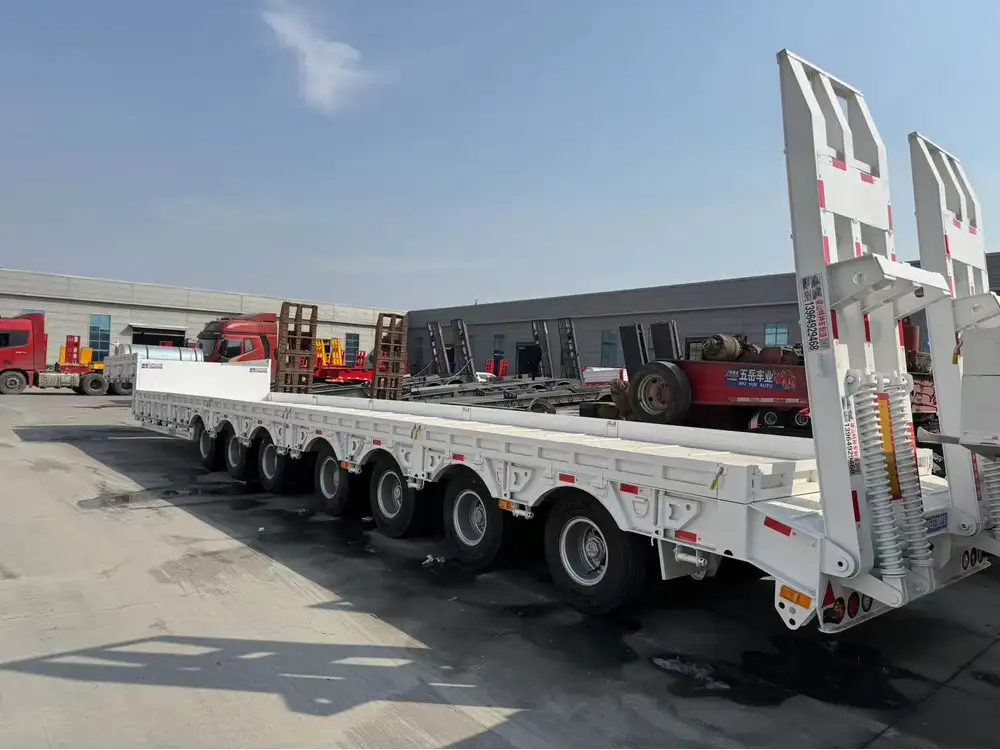Operating a dump trailer, particularly on an incline, requires a professional understanding of safety protocols, mechanical functionalities, and environmental considerations. In this article, we delve into safe operation techniques, potential hazards, and maintenance strategies to ensure secure and efficient use.
Understanding Your Dump Trailer
Key Components of a Dump Trailer
| Component | Description |
|---|---|
| Chassis | The framework that supports the trailer and attaches to the towing vehicle. |
| Hydraulic System | Powers the lift mechanism for dumping cargo. |
| Bed | The flat or tilting surface for load carriage. |
| Axles | Support the weight of the trailer and facilitate towing. |
| Tires | Provide traction and stability. All tires must be properly inflated and rated for the load. |

Types of Dump Trailers
- Gravity Dump Trailers: Utilize gravity to unload materials, making them easier to operate on inclines but requiring careful balancing.
- Hydraulic Dump Trailers: These trailers employ hydraulic mechanisms to lift the bed and release the load, offering better control and efficiency when managing heavy weight on slopes.
Preparing to Operate on an Incline
Safety Briefing
Before engaging in operations on slopes, all personnel involved should undergo a safety briefing. This briefing should cover the following areas:
- Understanding the Terrain: Identify the incline’s steepness and surface condition. Is it wet, dry, rocky, or uneven?
- Load Management: Ensure that the load is evenly distributed. An unbalanced load can lead to tipping, especially on an incline.

Essential Equipment Checks
Before operating, conduct a thorough pre-use inspection. This should encompass:
- Tire Pressure: Ensure all tires are inflated to the manufacturer’s specifications.
- Hydraulic Fluids: Check hydraulic fluid levels and look for leaks in the system.
- Brakes: Test the braking system for functionality and responsiveness.
- Lights and Signals: Confirm that all lighting and signaling devices operate correctly.
Recommended Safety Gear
When operating a dump trailer, especially on an incline, wear appropriate personal protective equipment (PPE):
- Hard Hat: Protects against falling debris.
- Steel-Toed Boots: Provides foot protection on rough terrain.
- High Visibility Vest: Ensures you’re visible to others in low-light conditions.
Techniques for Operating a Dump Trailer on an Incline

Positioning the Trailer
- Approach Angle: Always approach the incline at a straight angle. This minimizes the risk of the trailer sliding sideways.
- Distance from Edge: Maintain sufficient distance from the edge of the incline to avoid tipping hazards.
Operating Procedures
- Engaging the Trailer: When backing up a dump trailer to a loading area, ensure that the trailer is straight and squared with the load.
- Raising the Dump Bed: When unloading, lower the bed gently to prevent it from slamming against the ground. Consider the angle of the trailer, as an excessively steep angle could cause instability.
- Controlling the Load: As the material begins to fall, maintain a steady approach and adjust the hydraulic system to control the release and prevent spillage that could contribute to uneven loading.
Effective Loading and Unloading Techniques
| Technique | Description |
|---|---|
| Gradual Lifting | Operate the hydraulic lift slowly to ensure stability before fully raising the bed. |
| Tailgate Control | Use tailgate mechanisms to control material discharge, which prevents unwanted rolling or shifting of loads. |
| Spotting Helpers | Use ground personnel to signal during the loading and unloading processes to enhance safety. |

Potential Hazards
Common Risks When Operating on an Incline
- Tipping Over: A primary concern is the risk of the trailer tipping. This can occur if the load is uneven or if the trailer isn’t positioned correctly.
- Rolling: An unsecured trailer can roll down the incline. Always engage the parking brake and, if safe to do so, utilize wheel chocks.
- Loss of Control: Heavy loads may cause loss of traction or control. It’s essential to keep the trailer moving forward, avoiding abrupt maneuvers.
Emergency Protocols
Should an incident occur:
- Remain Calm: Keeping composure can mitigate further issues.
- Assess the Situation: Determine the immediate hazards and secure the area.
- Use Emergency Systems: Activate emergency brake systems and alert relevant personnel.

Maintenance Considerations
Regular Inspections
Regular maintenance is crucial to ensure the longevity and reliability of a dump trailer, especially when subjected to demanding operational conditions like inclines. Perform the following:
- Weekly Checks: Inspect hydraulic lines, brakes, and tire conditions.
- Monthly Service: Have the trailer serviced by a professional to check for frame integrity and mechanical wear.
- Annual Overhaul: Complete a comprehensive review of systems, including electrical and hydraulic, to avoid unexpected failures during operation.
Lubrication
Proper lubrication of moving parts is essential for preventing wear and tear that can lead to mechanical failure. Ensure:
- Bushings and Joints: Lubricate all pivot points and joints regularly.
- Wheels and Axles: Check wheel bearings and axles for proper lubrication.

Conclusion
Operating a dump trailer on an incline is a complex task that demands respect for safety protocols, a comprehensive understanding of the equipment, and meticulous attention to practices that ensure operational effectiveness. By adhering to structured guidelines, performing regular maintenance, and addressing potential hazards proactively, operators can significantly reduce risks and enhance efficiency.
As we operate and innovate in our manufacturing processes, keeping these best practices in mind will not only optimize our operations but also reinforce our commitment to safety and reliability in the dump trailer industry. Your expertise in using a dump trailer effectively on inclines can lead to improved job performance, minimize downtime, and ultimately contribute to a safer working environment for everyone involved.



